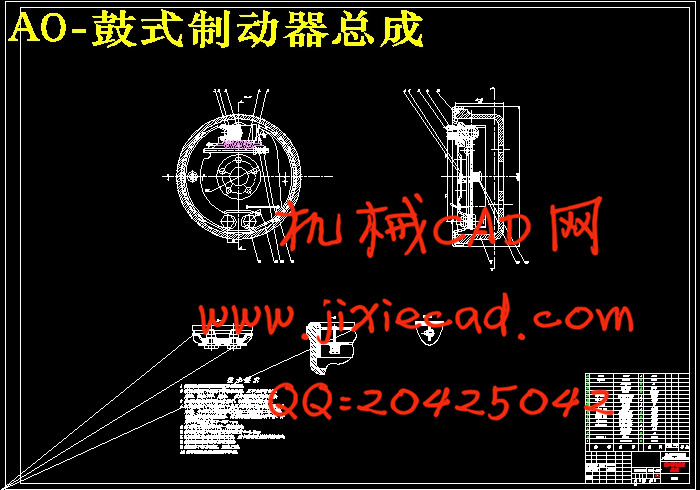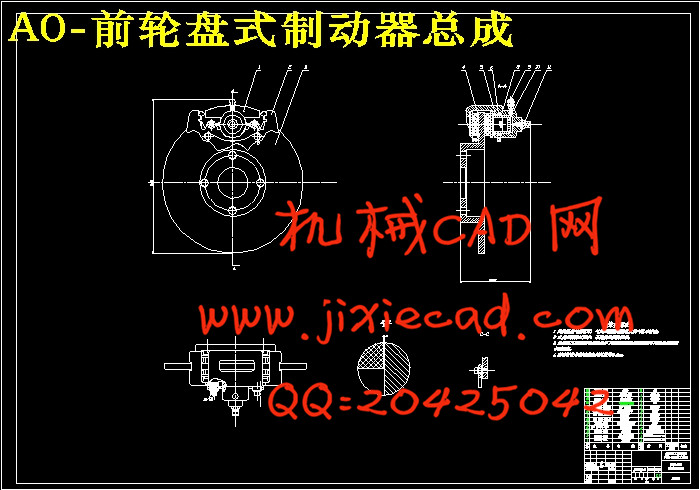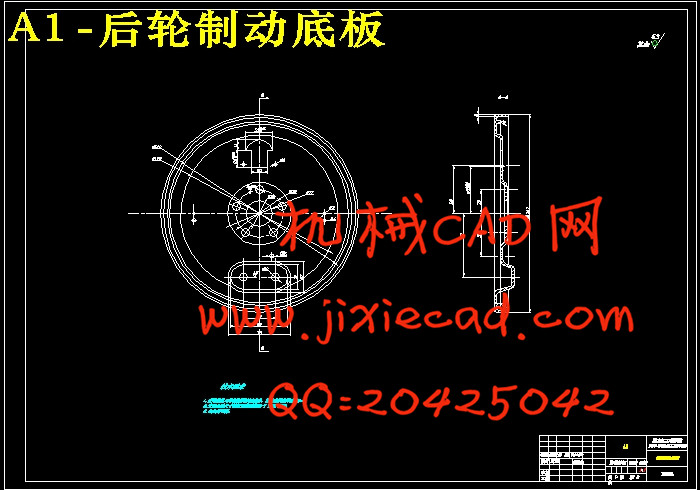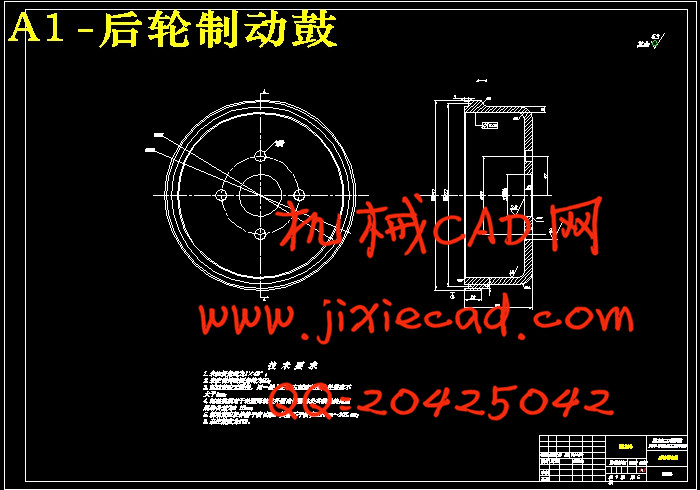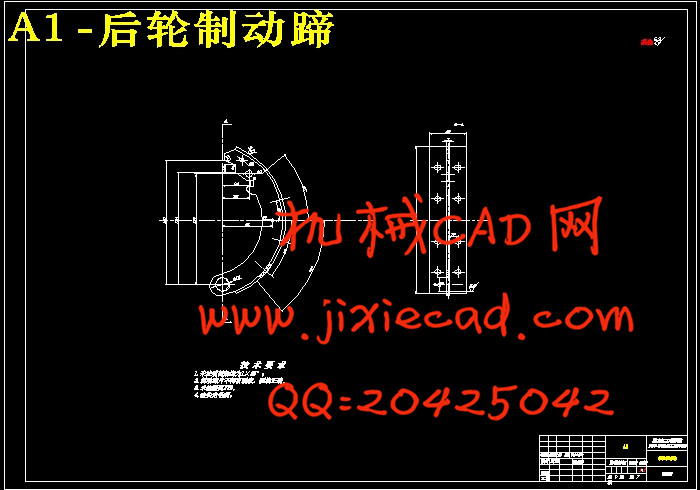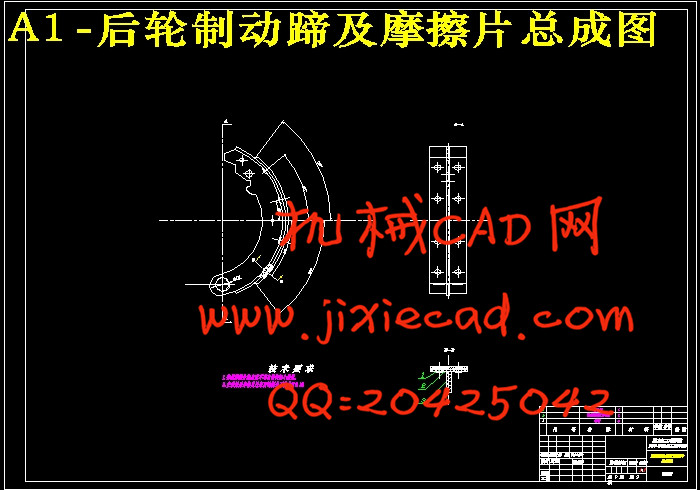设计简介
摘 要
国内汽车市场迅速发展,随着汽车保有量的增加,带来的安全问题也越来越引起人们的注意,而制动系统则是汽车主动安全的重要系统之一。因此,如何开发出高性能的制动系统,为安全行驶提供保障是我们要解决的主要问题。另外,随着汽车市场竞争的加剧,如何缩短产品开发周期、提高设计效率,降低成本等,提高产品的市场竞争力,已经成为企业成功的关键。
本说明书主要根据已有的路宝汽车的数据对制动系统进行设计。首先介绍了汽车制动系统的发展、结构、分类,并通过对鼓式制动器和盘式制动器的结构及优缺点进行分析。最终确定方案采用液压双回路前盘后鼓式制动器的制动系统。除此之外,它还介绍了前后制动器、制动主缸的设计计算,主要部件的参数选择及制动管路布置形式等的设计过程。
关键字:制动;鼓式制动器;盘式制动器;液压;制动管路
ABSTRACT
The rapid development of the domestic vehicle market, However, with increasing of vehicle, security issues are arising from increasingly attracting attention, the braking system is one of important system of active safety. Therefore, how to design a high-performance braking system, to provide protection for safe driving is the main problem we must solve. In addition, with increasing competition of vehicle market, how to shorten the product development cycle, to improve design efficiency and to lower costs, to improve the market competitiveness of products, and has become a key to success of enterprises.
This paper mainly introduces the design of braking system ,which based on the data of brake system used in LUBAO. Fist of all, braking system’s development, structure and category are shown, and according to the structures, virtues and weakness of drum brake and disc brake, analysis is done. At last, the plan adopting the braking system with hydroid two-backway brake with front disc and rear drum. Besides, this paper also introduces the designing process of front brake and rear brake, braking cylinder, parameter’s choice of main components braking and channel settings.
Key words: braking; brake drum; brake disc; hydroid pressure; Brake pipe
目 录
摘要 Ⅰ
Abstract Ⅱ
第1章 绪论 1
1.1 制动系统设计的意义 3
1.2 制动系统研究现状 3
1.3 制动系统设计内容 4
第2章 制动系统总体方案设计 5
2.1 制动器的结构型式的选择 5
2.2 制动驱动机构的结构型式的方案比较选择 7
2.3 制动管路的多回路系统 9
2.4 本章小结 10
第3章 制动器设计计算 11
3.1 路宝汽车的主要技术参数 11
3.2 制动系统的主要参数及其选择 11
3.2.1 同步附着系数 11
3.2.2 制动强度和附着系数利用率 12
3.2.3 制动器最大的制动力矩 13
3.3 制动器的结构参数 14
3.3.1 鼓式制动器的结构参数 14
3.3.2 盘式制动器的结构参数 16
3.4 制动器的设计计算 17
3.4.1 鼓式制动器摩擦片上的制动力矩 17
3.4.2 盘式制动器制动块上的制动力矩 21
3.4.3 制动器的效能因数 22
3.5 摩擦衬片的磨损特性计算 26
3.6 制动器的热容量和温升的核算 26
3.7 驻车制动计算 27
3.8 制动器主要零件的结构设计 28
3.8.1 制动鼓 28
3.8.2 制动蹄 29
3.8.3 制动底板 29
3.8.4 制动蹄的支承 29
3.8.5 制动轮缸 29
3.8.6 制动盘 30
3.8.7 制动钳 30
3.8.8 制动块 30
3.8.9 摩擦材料 30
3.8.10 制动摩擦衬片 31
3.8.11 制动器间隙 31
3.9 制动蹄支承销剪切应力计算 32
3.10 本章小结 34
第4章 制动驱动机构的设计计算 35
4.1 轮缸直径与工作容积 35
4.1.1 盘式制动器直径与工作容积 35
4.1.2 鼓式制动器直径与工作容积 36
4.2 制动主缸直径与工作容积 36
4.3 制动轮缸活塞宽度与缸筒的壁厚 37
4.3.1 盘式制动轮缸活塞宽度与缸筒壁厚 37
4.3.2 盘式制动器活塞宽度与缸筒壁厚 38
4.4 制动主缸行程的计算 38
4.5 制动主缸活塞宽度与缸筒的壁厚 39
4.5.1 制动主缸活塞宽度 39
4.5.2 制动主缸筒的壁厚 39
4.6 制动踏板力与踏板行程 39
4.7 真空助力器 41
4.8 制动液的选择与使用 42
4.9 制动力分配的调节装置 43
4.9.1 感载比例阀 43
4.10 本章小结 44
结论 45
参考文献 46
致谢 47
国内汽车市场迅速发展,随着汽车保有量的增加,带来的安全问题也越来越引起人们的注意,而制动系统则是汽车主动安全的重要系统之一。因此,如何开发出高性能的制动系统,为安全行驶提供保障是我们要解决的主要问题。另外,随着汽车市场竞争的加剧,如何缩短产品开发周期、提高设计效率,降低成本等,提高产品的市场竞争力,已经成为企业成功的关键。
本说明书主要根据已有的路宝汽车的数据对制动系统进行设计。首先介绍了汽车制动系统的发展、结构、分类,并通过对鼓式制动器和盘式制动器的结构及优缺点进行分析。最终确定方案采用液压双回路前盘后鼓式制动器的制动系统。除此之外,它还介绍了前后制动器、制动主缸的设计计算,主要部件的参数选择及制动管路布置形式等的设计过程。
关键字:制动;鼓式制动器;盘式制动器;液压;制动管路
ABSTRACT
The rapid development of the domestic vehicle market, However, with increasing of vehicle, security issues are arising from increasingly attracting attention, the braking system is one of important system of active safety. Therefore, how to design a high-performance braking system, to provide protection for safe driving is the main problem we must solve. In addition, with increasing competition of vehicle market, how to shorten the product development cycle, to improve design efficiency and to lower costs, to improve the market competitiveness of products, and has become a key to success of enterprises.
This paper mainly introduces the design of braking system ,which based on the data of brake system used in LUBAO. Fist of all, braking system’s development, structure and category are shown, and according to the structures, virtues and weakness of drum brake and disc brake, analysis is done. At last, the plan adopting the braking system with hydroid two-backway brake with front disc and rear drum. Besides, this paper also introduces the designing process of front brake and rear brake, braking cylinder, parameter’s choice of main components braking and channel settings.
Key words: braking; brake drum; brake disc; hydroid pressure; Brake pipe
目 录
摘要 Ⅰ
Abstract Ⅱ
第1章 绪论 1
1.1 制动系统设计的意义 3
1.2 制动系统研究现状 3
1.3 制动系统设计内容 4
第2章 制动系统总体方案设计 5
2.1 制动器的结构型式的选择 5
2.2 制动驱动机构的结构型式的方案比较选择 7
2.3 制动管路的多回路系统 9
2.4 本章小结 10
第3章 制动器设计计算 11
3.1 路宝汽车的主要技术参数 11
3.2 制动系统的主要参数及其选择 11
3.2.1 同步附着系数 11
3.2.2 制动强度和附着系数利用率 12
3.2.3 制动器最大的制动力矩 13
3.3 制动器的结构参数 14
3.3.1 鼓式制动器的结构参数 14
3.3.2 盘式制动器的结构参数 16
3.4 制动器的设计计算 17
3.4.1 鼓式制动器摩擦片上的制动力矩 17
3.4.2 盘式制动器制动块上的制动力矩 21
3.4.3 制动器的效能因数 22
3.5 摩擦衬片的磨损特性计算 26
3.6 制动器的热容量和温升的核算 26
3.7 驻车制动计算 27
3.8 制动器主要零件的结构设计 28
3.8.1 制动鼓 28
3.8.2 制动蹄 29
3.8.3 制动底板 29
3.8.4 制动蹄的支承 29
3.8.5 制动轮缸 29
3.8.6 制动盘 30
3.8.7 制动钳 30
3.8.8 制动块 30
3.8.9 摩擦材料 30
3.8.10 制动摩擦衬片 31
3.8.11 制动器间隙 31
3.9 制动蹄支承销剪切应力计算 32
3.10 本章小结 34
第4章 制动驱动机构的设计计算 35
4.1 轮缸直径与工作容积 35
4.1.1 盘式制动器直径与工作容积 35
4.1.2 鼓式制动器直径与工作容积 36
4.2 制动主缸直径与工作容积 36
4.3 制动轮缸活塞宽度与缸筒的壁厚 37
4.3.1 盘式制动轮缸活塞宽度与缸筒壁厚 37
4.3.2 盘式制动器活塞宽度与缸筒壁厚 38
4.4 制动主缸行程的计算 38
4.5 制动主缸活塞宽度与缸筒的壁厚 39
4.5.1 制动主缸活塞宽度 39
4.5.2 制动主缸筒的壁厚 39
4.6 制动踏板力与踏板行程 39
4.7 真空助力器 41
4.8 制动液的选择与使用 42
4.9 制动力分配的调节装置 43
4.9.1 感载比例阀 43
4.10 本章小结 44
结论 45
参考文献 46
致谢 47


